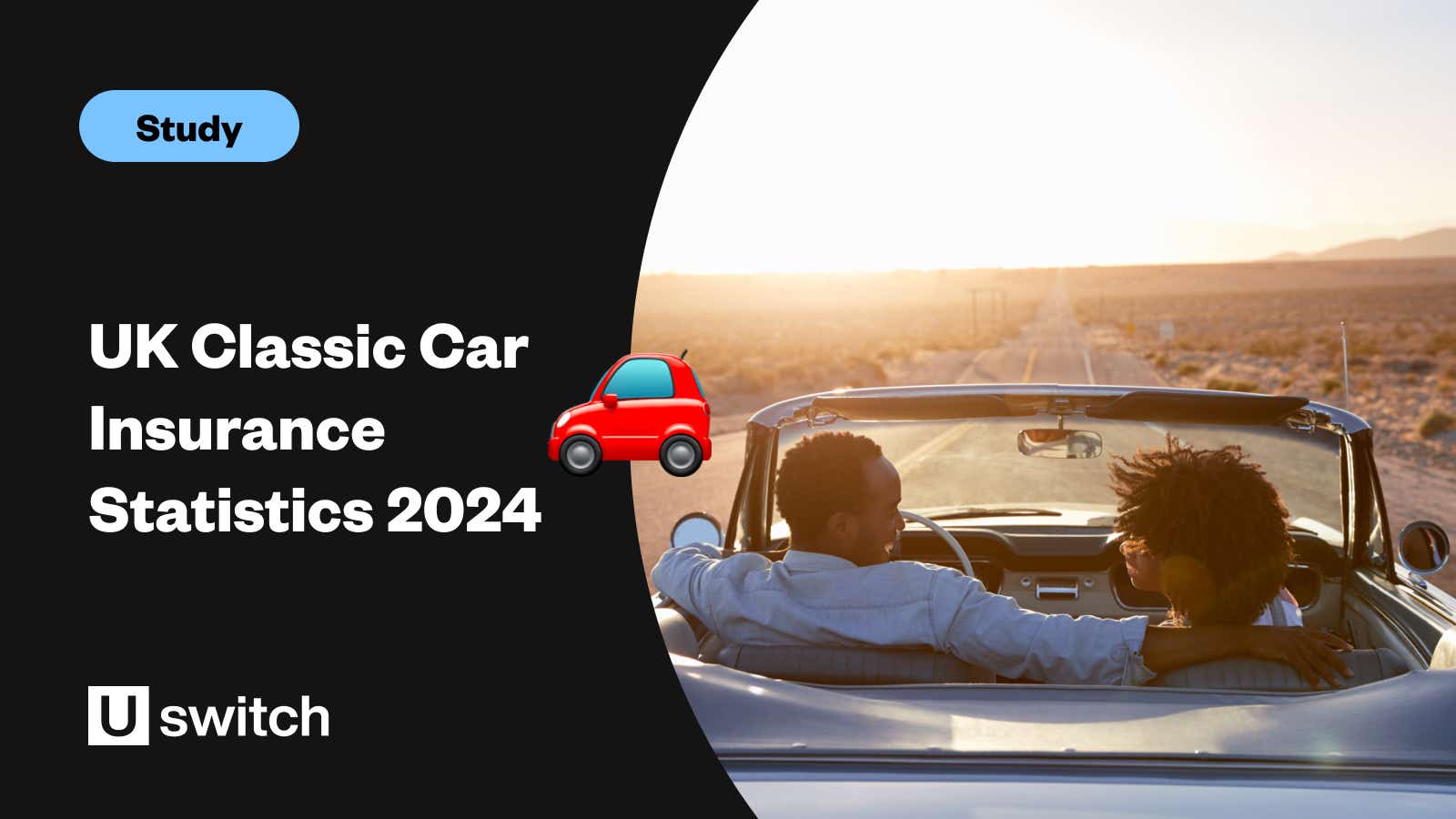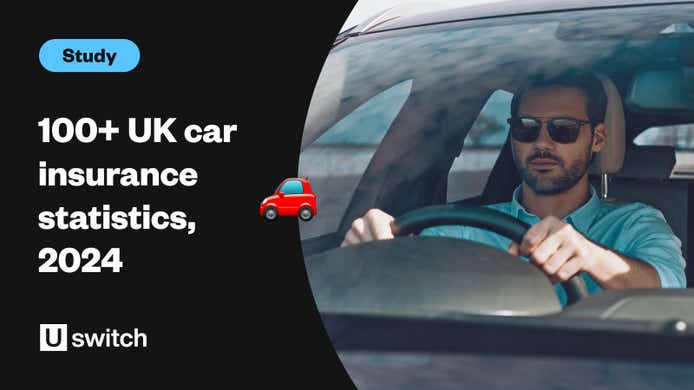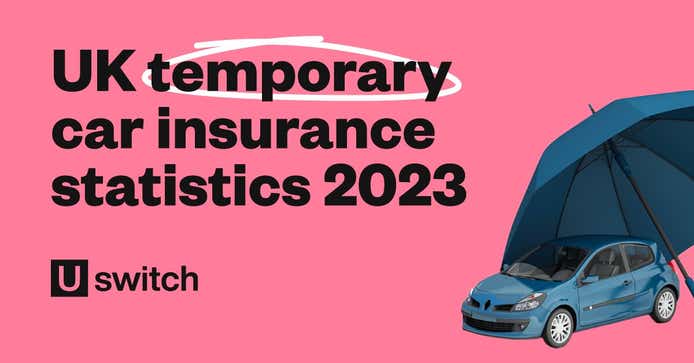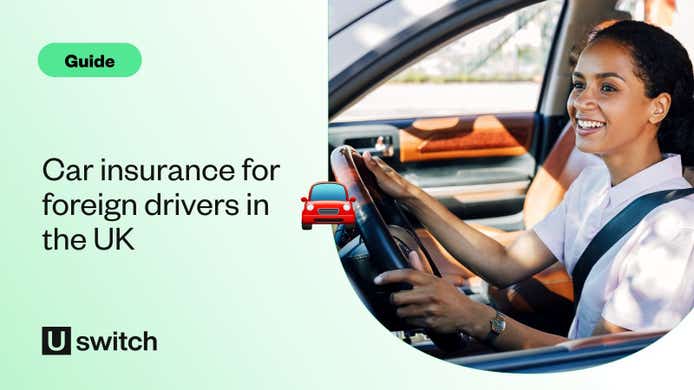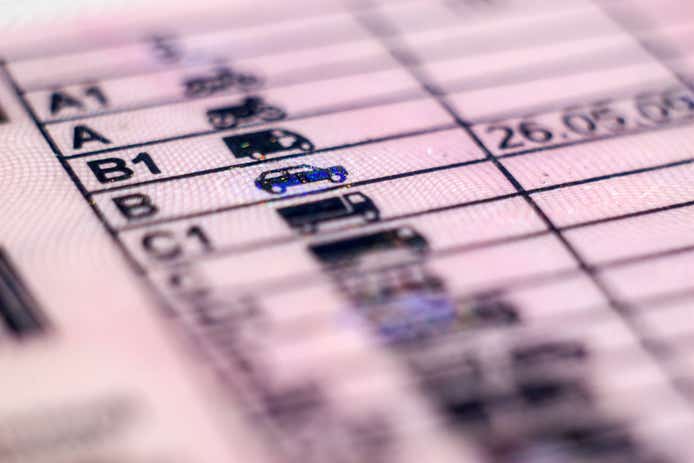With classic cars continuing to be both a passionate hobby and a source of investment for thousands across the UK, the classic car insurance industry has risen in prominence throughout the last two decades. Like most industries, however, classic car insurance has had to navigate numerous difficult circumstances over the last few years, from Brexit to the COVID-19 pandemic and, most recently, the cost of living crisis.
Our research has gathered the most prominent classic car insurance statistics for 2024, to include information on people’s averagepremiums, the size of the classic car insurance industry, as well as demographic breakdowns such as age, region, and car type. By looking at past data and future projections, we were able to document how the industry has evolved over time and make predictions about the future of classic car insurance in the UK.
Top UK classic car insurance statistics 2024
In 2024, the market size of the classic car insurance industry is £757.6 million, indicating a +1.6% increase from the £745.3 million recorded in 2023.
Since 2019, the market size of the classic car insurance industry in the UK has, on average, decreased by -0.7% per year.
The industry peak occurred in 2019 when it was valued at £786 million.
Drivers aged 17-20 pay an average of £7,633 per year for classic car insurance – over 400% more than any other age group
Women pay £491 for classic car insurance on average – 25% more than men.
Drivers in the South West pay the least on average for classic car insurance in the UK (£279 per year).
What is classic car insurance and how does it work?
Classic car insurance is a specifically designed type of insurance aimed at older cars typically used as secondary vehicles for leisure purposes. HMRC states that, for a car to be considered classic, it must be at least 15 years old and hold a minimum value of £15,000.
Classic car insurance tends to be cheaper than normal car insurance, as insurers expect classic cars to be driven less and be better maintained by owners. As such, classic car insurance typically covers customers for less mileage than a standard insurance plan, with a pre-mileage cap usually in place.
Like standard car insurance, classic cars can be covered by various different types of car insurance plans including third-party, third-party fire and theft, or comprehensive insurance. Some drivers will also opt to enhance their coverage with add-ons like breakdown cover.
There are a few other common features of classic car insurance, they are:

Agreed valuation
Agreed value is a pre-agreed deal between the customer and insurer on the valuation of a classic car. In the event of a claim, the customer will be insured for the overall agreed value, regardless of whether the market value of the car has increased or diminished since the time of the initial agreement.

Laid-up cover
Laid-up cover provides fire and theft cover on cars that have been taken off the road for a period of time. This type of cover is popular in classic car insurance, as many owners opt to take their cars off the road during the winter months.
Additionally, as classic cars often require longer or regular restoration than standard vehicles, laid-up cover allows these cars to remain insured at a reduced cost while they’re off the road.
UK classic car insurance market statistics
Recent UK classic car insurance research has found that the classic car insurance market is worth £758 million in 2024 – the highest figure recorded since 2019.
While this represents a significant rise, the industry remains some way off its 2019 peak, when the market was found to be worth over £785 million.
A breakdown of the market size of the classic car insurance industry by year (2014-24)

The classic car insurance market, valued at £725.1 million in 2014, saw a steady upward trajectory until 2019, increasing by +8.3% in those five years.
However, the subsequent years witnessed fluctuations, notably in 2020 and 2021, where the market contracted to £755.8 million and £710.8 million respectively.
There is a 9.5% percentage decrease from the highest peak in 2019 to the lowest peak in 2021. This decline may be attributed to economic uncertainties and changing consumer behaviours amid the global pandemic.
In 2022, the market rebounded to £727.9 million, signifying a partial recovery of +2.4% on 2021 figures. This positive momentum continued in 2023, with the market size reaching £745.3 million (a further increase of +2.3%).
The latest data for 2024 has seen the market grow to £757.6 million. This represents a +4% increase compared to the figures recorded in 2014, reflecting a decade of consistent expansion.

UK classic car insurance cost statistics (exclusive data)
To determine the average cost of classic car insurance in the UK, we looked at the average insurance price for 10 of the most popular classic car brands across UK regions, brands, and demographics.
Based on our findings, we can reveal that the average cost of classic car insurance in the UK is approximately £469 per year in 2024. This means the average cost of classic car insurance has risen by 17% in the last twelve months (£401 in 2023).
Which age group pays the most for classic car insurance in the UK?
The latest UK classic car insurance statistics found that the youngest drivers paid by far the highest premiums for classic car insurance. With average annual premiums of more than £7,500 per year, drivers aged 17-20 are likely to pay an astonishing 347% more than any other age group.
A breakdown of the average cost of UK classic car insurance by age (2023)

Despite the immediate drop in premiums after the lowest age group, the next youngest age groups also pay more than the combined average for their classic car insurance. There is a 44% decrease in premiums between the ages of 21-25 (£1,685) and 26-30 (£939) – the second and third most expensive categories.

Prices continue to reduce for the next eight age groups until we reach the lowest point at age 66-70, with this group paying around £229 per year on average.
There is a sharp rise between the oldest two age groups, with those aged 81 and over (£488) paying 72% more than those aged 76-80 (£284). With premiums of almost £500, those aged 81 and above paid 113% more than 66-70-year-olds, but 94% less than drivers aged 17-20. It’s also worth noting that average costs may be less if you get classic car insurance as part of a multi-car insurance deal.
Are you a younger driver looking to keep your costs down?
Visit our site to find the best deals on car insurance for younger drivers.
Which UK region pays the most for classic car insurance?
London was found to be the region that paid the most for classic car insurance, with an average annual cost of £744 – 41% more than any other region.
A regional breakdown of the average price of classic car insurance in the UK (2023)

Following London in first place is the North West, which has an average annual premium of £528. This means drivers in this region pay 4% more on average than drivers in the West Midlands, and 12% more than those in Yorkshire and The Humber.
The South West had the lowest fees for classic car insurance, with its annual cost of £324. This means that drivers in the South West pay around 56% less for classic car insurance than London drivers, and 39% less than drivers in the North West.
Outside of England, Northern Ireland is the UK nation with the highest annual premiums (£464), followed by Scotland (£374). Wales paid the least for classic car insurance, with average annual premiums of £333 – 28% lower than Northern Ireland and 11% lower than Scotland.
Check out our car insurance guides to find expert tips on how to get deals on a range of flexible plans including temporary car insurance and pay-as-you-go car insurance.
Do women pay less for classic car insurance than men?
The most recent UK classic car insurance report found that women pay around £428 per year for classic car insurance. This is only £4 cheaper than men, who were found to pay £432 on average. However, you may find a better deal with a specific car insurance for women policy.
Classic car price statistics
In the last five years, the prices of classic cars have gone up and down. In 2019, the median price was £21,142. By 2023, it jumped to £27,270, which is an increase of a little over £6,000.
A breakdown of classic car prices by year (2019-23)

2021 marked a more substantial increase, as classic car prices climbed to £22,737, an increase of +6.8% on 2020 figures.
In 2022, the trend took a turn, with the median price experiencing a marginal dip to £22,256. Despite this dip, the market regained momentum in 2023, with the median price increasing by less than a quarter (+22.5%) to £27,270. This surge reversed the previous year's decline and set a new high for classic car prices during the specified period.
How do classic car price trends vary by country?
Classic car prices display significant variations among countries, with the USA notably experiencing a rise of almost a third (+32.6).
A breakdown of classic car price trends by country

The United States emerges as a frontrunner, experiencing a surge in median prices between the first half of 2022 and 2023 – more than a fifth (21.5%) greater than the UK.
The UK demonstrates positive growth, with a +11.1% uptick in median prices, suggesting a buoyant market in the UK.
In contrast, the European Union (EU) is witnessing a divergent trend, with classic car prices experiencing a -5.7% decline in 2023 compared to 2022. This downturn implies a more challenging environment for classic car values within the EU, possibly influenced by various economic factors or shifting preferences among buyers in the region.
How do classic car prices vary by vehicle age?
Examining classic car price changes by decade of production reveals intriguing patterns in the classic car market. Vintage vehicles from the 1920s and 1930s exhibit a slight downturn, experiencing decreases of -10% and -9% respectively. This may suggest a more subdued demand or a niche market for cars from these earlier decades.
A breakdown of classic car vehicle production price changes by decade (the 1920s-2000s)

Classic cars produced in the 1940s saw a significant +21% price increase. The 1950s and 1960s continue this upward trajectory, demonstrating a growth of +29% and +51% respectively.
The 1970s stands out as a period of substantial appreciation, with classic car prices soaring by +65%. This surge may be attributed to the unique and distinctive models produced during this era, capturing the interest of collectors.
Moving into the 1980s, classic cars from this decade experience a healthy increase of 25%, showcasing a continued trend of appreciation. The 1990s and 2000s follow suit with gains of +17% and +10% respectively.
What are the demand levels in the classic car market in the UK?
The average monthly Google search volume for the term "classic car" reveals fluctuations in demand within the UK market over the years from 2019 to 2023.
Over the last five years, 2019 recorded the highest average monthly Google searches, reaching a total of 73.
A breakdown of the average searches on Google for the term "classic car" by year (2019-2023)

The subsequent year, 2020, saw a slight dip in interest, with the average monthly searches falling to 56. This marked a decrease of nearly a quarter (-23%) from 2019 figures.
However, in 2021, there was a resurgence, with an average of 63 searches per month, suggesting a renewed or sustained interest in classic cars.
The year 2022 witnessed a further uptick in online searches, increasing by +13% and reaching an average of 71 per month. This trend carried into 2023, maintaining the same average monthly search volume.
Searches for "classic cars" reached their highest point in May 2019 and 2023, and August in both 2021 and 2022.
Classic car ownership statistics
A 2020 report commissioned by the Historic Endurance Rallying Organisation and Endurance Rally Association (HERO-ERA) estimated that the UK classic car market generates £18.7 billion per year in turnover, with a further £2.9 billion in tax revenues.

Of this revenue, it was estimated that classic car rentals were responsible for around 14% of the overall industry turnover (£272 million), with other key income sources including:
Owners' clubs generated £111 million in turnover (6% of the industry total)
Museums generated £62 million – 3% of industry turnover
A further £59 million (3%) was spent on magazines, with £50 million (2%) spent on tools, and £10 million (0.5%) on clothes and memorabilia.
The same report estimated that there were approximately 1.6 million classic cars in the UK, totalling at a combined value of £8.7 billion. This figure accounted for 69% of the overall classic vehicle industry, which was valued at £12.6 billion.

According to a 2021 survey by the Federation of British Historic Vehicle Clubs (FBHVC), the UK saw a rise in the number of 'historic' vehicles registered on roads from 2015-21. Rising from 1,039,950 to 1,538,927 – an increase of almost two-fifths (+39%).
Additionally, the total spending in the historic vehicle sector increased to £7.2 billion in 2021, up from £5.5 billion in 2016 – an increase of +27%.
Classic car ownership consumer survey
In 2022, Footman James conducted a comprehensive report to gauge the sentiments of average motorists towards classic cars and their potential interest in engaging with this niche.
The findings provide insightful classic car ownership statistics from a consumer standpoint, reflecting the perspectives of over 2,900 UK residents.
A breakdown of classic car ownership gender statistics to show whether people would consider owning a classic car in the future

Classic car ownership statistics reveal that 32% of male respondents show a genuine interest in owning a classic car. In contrast, among female respondents, only 19% expressed interest, highlighting a 13% difference between the two sexes.
Half of the male respondents (50%) and nearly three-fifths of the female respondents (59%) express no interest in owning a classic car, highlighting a slight disparity in disinterest between the two groups.
Statistics on classic car ownership reveal that 18% of male respondents are undecided, indicating some uncertainty within this group. In contrast, 22% of female participants are uncertain about their stance, reflecting a slightly higher level of indecision (+4%) compared to men.
A breakdown of classic car ownership generation statistics to show whether people would consider owning a classic car in the future

Among Gen Z (born between 1997 and 2012), there is a notable enthusiasm for classic cars, with almost half (49%) expressing interest. This is around a third (34%) higher than the interest shown by the Silent Generation, at 15%, and 14% higher than that of the previous generation, Millennials.
Moving to Gen X (born between 1965 and 1980), the interest in classic cars decreased to just under a quarter (23%), reflecting a 26% drop compared to Gen Z. Baby Boomers (born from 1946 to 1964) exhibited a further decline in interest to 17%, with almost two-thirds (63%) showing no interest in classic cars.
The Silent Generation (born between 1928 and 1945) has the lowest interest in classic cars, at 15%, with 71% expressing no interest. This means that 47% more people in the Silent Generation have no interest in classic cars compared to Gen Z.
Exploring joint ownership in the classic car consumer survey
The Footman James report from 2022 also examined the concept of joint or shared ownership – which involves multiple individuals sharing a single car.
A breakdown of classic car ownership gender statistics to show whether people would consider joint ownership in the future

Among male respondents, almost half (47%) expressed openness to joint ownership, 47% showed a lack of interest, and 6% remained uncertain about the prospect.
In contrast, female respondents show a lower overall interest in joint ownership, with only a quarter (25%) expressing a positive inclination. This marks a significant percentage difference of almost two-fifths (61%) compared to men.
A larger proportion (50%) indicated a lack of interest, highlighting a higher degree of disinterest among women. Additionally, a quarter (25%) of female participants remain uncertain about their stance on joint ownership.
A breakdown of classic car ownership generation statistics to show whether people would consider joint ownership in the future

While Gen Z stands out as the age group most interested in owning a classic vehicle in the future, they appear hesitant about sharing. Specifically, for those born between 1997 and 2012, there's a split opinion, with 50% outright against joint ownership and another 50% uncertain about embracing this shared approach to vehicle ownership.
When looking at Millennials and Gen X, there is a notable interest in joint ownership. Specifically, just over half (51%) of Millennials expressed a positive inclination towards joint ownership, while an even higher majority of 55% is seen among Generation X.
The Baby Boomer generation stands out for having the lowest number of respondents interested in joint ownership (14%), showing a difference of almost two-fifths (37%) when compared to Millennials (51%) who occupy the highest spot.
Comparatively, around seven in 10 (71%) Baby Boomers stated that they would not consider joint ownership. This marks a significant difference of almost two-thirds (65%) when compared to the generation that follows them, Gen X.
What are the most profitable brands in the classic car industry?
The latest classic car insurance statistics found that Porsche is the manufacturer generating the most revenue in the UK, with the combined value of its classic cars worth nearly £1.2 billion.
This figure was 61% higher than any other brand and accounted for 14% of the overall industry revenue. With just under 44,000 classic Porsches in the UK, the German manufacturer was found to have an average classic car valuation of £27,010.
A breakdown of the 10 most valuable classic car manufacturers in terms of combined car value (£) in 2020

Porsche was followed by Jaguar (£723.3 million) which, despite having around 4,000 (10%) more classic cars than Porsche, had a considerably lower average car value of £15,136.
Despite having the highest average value of any classic car manufacturer in the top 10 (£92,510), third-placed Aston Martin had a significantly lower total of classic cars (6,622), meaning its overall revenue was 14% lower than Jaguar and 47% lower than Porsche.
Conversely, while Ford has a total of 175,553 classic cars in the UK – 74% higher than any other brand in the top 10 – their average classic car price is just under £2,000. This means that Ford’s overall revenue, £332.6 billion, is the eighth-highest of the top 10 classic car brands.
Outside of the top 10, Bugatti has the highest average value, with its 113 classic cars in the UK found to be worth just under £575,000 on average – or £76.5 million combined.
What are the most profitable classic car models?
The latest UK classic car insurance stats found that Porsche classic cars generate the most revenue in the UK, with the total stock of its 911 model worth nearly £911 million.
This figure represents a 146% increase on the second most profitable classic car, the Jaguar E Type, and is more than the combined value of the final six cars on the list, these were:
MG MGB
Aston Martin DB5
Ford Escort
Land Rover Discovery
Jaguar XJ Series
Bentley Continental
A breakdown of the 10 most valuable classic cars in terms of combined value (£) in 2020.

The Jaguar E Type has a combined stock worth £370.8 million, which is almost two and a half times less than the Porsche 911. Despite the E Type having an average valuation of more than double that of the 911 (£90,000 vs £39,551), as the model has only 4,120 cars in existence, its combined value was far less.
Aston Martin’s DB5 is the most valuable classic car on the list, with the model costing around £700,000 – more than seven times the figure of any other car in the top 10. Despite this, the DB5 only generated the sixth-highest combined value, with the total number of classic cars (210) around 99% fewer than the Porsche 911.
Similarly, although the Austin/Rover Mini has the highest number of classic cars in existence within the top 10 (56,650), its average value of just £5,459 meant that its combined worth (£309.2 million) was 66% less than that of the Porsche 911.
Which classic cars cost the most to insure? (exclusive data)
We analysed the insurance premiums of the 10 most popular classic car brands and can reveal Ferrari has the highest classic car insurance premiums, on average. Stats show that the famous Italian car brand has a median annual total of £804 – around 9% higher than any other car manufacturer.
A breakdown of the average classic car insurance costs for the 10 most popular classic car brands

Bentley followed behind in second, with average annual insurance premiums of £735 – 32% more than the third costliest brand, BMW (£556). Half (50%) of the brands in the top 10 have classic car insurance costs between £300 and £500, with the cheapest two brands, Jaguar and MG, costing £259 and £106, respectively.
As the only brand with average costs below £200, MG was by far the cheapest brand for classic car insurance. To put this in perspective, MG’s annual figures are around 59% less than Jaguar's (£259) and 87% less than Ferrari's. It’s worth noting that costs may be higher if you’ve made previous claims before.
Which UK region has the most classic cars?
Recent UK classic car insurance statistics show that the West Midlands is the UK’s classic car hotspot. The region is estimated to have a share of 9.6% of classic cars, which is estimated to generate around £1.8 billion in turnover and £838 million in gross added value (GVA).
A breakdown of the 10 UK regions with the highest percentage of classic cars

Yorkshire had the second biggest classic car market (8.2%) with a turnover of around £1.49 billion – 15% lower than the West Midlands. Lancashire was the only other region with an estimated turnover above £1 billion, with its overall market value accounting for 5.6% of the UK classic car industry.
The remainder of the top 10 is comprised entirely of southern regions, with fourth-placed London having the highest market share (5.5%). With an estimated turnover of £961 million, London’s classic car turnover was thought to be around 45% lower than the West Midlands and 36% lower than Yorkshire.
10 'affordable' classic cars that increased in value most in 2023
In 2023, Hagerty reported a list of 10 classic collectables with a value of £30,000 or less and whose value significantly increased throughout the year.
This comprehensive comparison provides valuable insights into trends within the classic car market, showcasing the diverse range of models that gained significant traction and increased in value throughout 2023.
A breakdown of the 10 most affordable classic cars and examining their value changes in 2023

Among these vehicles, the Subaru Impreza Turbo 2000 emerged as the top performer, experiencing a +161% increase in average price from £5,000 in December 2022 to £13,050 in December 2023.
Following closely is the BMW Z3 Roadster, securing the second position with a noteworthy +131% increase in value between 2022-23. The Ford Escort XR3i (MkIII) also made a significant impact, its average price rising by three-quarters (75%) from £7,875 to £13,750, showcasing its enduring popularity among collectors.
Further down the list of classic cars that have increased the most in value during 2023, the Vauxhall Calibra 2.0 8V experienced a +37% increase in average price, moving from £1,750 to £2,400. Lastly, the BMW Z3 M Roadster, with an initial average price of £20,000, saw a +36% increase, reaching £27,275 by the end of 2023.
FAQs
What is classic car insurance?
Classic car insurance is a type of specialist insurance policy designed for older cars that are typically used for leisure purposes. This type of insurance is usually cheaper than standard car insurance as it’s expected that classic cars will be driven less and better maintained than cars on a standard policy. As such, classic car insurance typically covers customers for significantly lower annual mileage than normal car insurance.
When does a car become a classic?
By the UK definition, a classic car refers to any car aged 15 or above that holds a value of at least £15,000. As such, the majority of classic car insurance policies will only cover your car if it meets both of these criteria.
Is classic car insurance cheaper?
Classic car insurance is typically cheaper than standard car insurance, as most insurers consider classic cars to be at lower risk of being involved in a claim. As it's expected that owners of a classic car will use the car as a part-time (or secondary) vehicle and take better care of it, the monthly premiums are usually lower.
This does mean, however, that classic car insurance is often considerably less flexible in terms of mileage cover
Is it worth getting classic car insurance?
If you own a secondary car that’s at least 15 years old and worth £15,000 or more, it may be a good idea to compare classic car insurance quotes. This type of insurance is likely to be considerably cheaper than standard insurance, with many providers offering an ‘agreed value’ which will cover your car for more than the standard market value.
What is ‘agreed value’ in classic car insurance?
Agreed value is an agreement between the customer and insurer on the value of a car at the time of taking out the insurance. This figure then remains fixed for the duration of the policy.
This means that, should a claim occur, you will be covered for the full cost of the originally agreed value rather than the current market value of your car. For classic car insurance, agreed value can be useful as it prevents your policy from paying out less should the market value of your car diminish over time.
What is the average cost of classic car insurance in the UK?
The latest UK classic car insurance statistics found that the average cost of classic car insurance in the UK is approximately £401 per year in 2023.
How much is the UK classic car insurance industry worth?
Recent UK classic car insurance statistics found that the classic car insurance market was worth £712.2 million in 2022. This figure is expected to have risen by around 1.7% in 2023, bringing the total market value of the industry to £729.5 million.
Is classic car insurance cheaper for new drivers?
While classic car insurance may be cheaper than standard car insurance for young drivers, it’s likely that the youngest drivers will still pay higher premiums for their classic car insurance than older drivers. This is because, according to UK car insurance statistics, younger drivers are more likely to make a claim on car insurance and be involved in an accident.
Do I need classic car insurance if I don’t drive my classic car often?
Yes, it is recommended that you have classic car insurance in place, even if you don’t use your classic car often.
This type of insurance is specifically designed for vintage vehicles, providing specialised coverage for aspects like agreed-upon value, spare parts, and restoration costs. This coverage ensures essential protection, offering peace of mind and safeguarding your investment, even when it’s not regularly driven.
Do I need an appraisal for classic car insurance?
Yes, an appraisal is recommended for classic car insurance. Many providers require an appraisal to establish the agreed-upon value, which is crucial for a set payout in case of a covered loss.
The process involves a qualified appraiser assessing the car's condition, rarity, and overall value, with some policies mandating periodic appraisals for market changes and modifications.
Can I get classic car insurance for a vintage motorcycle or other types of vehicles?
Yes, you can obtain classic car insurance for vehicles other than cars, including vintage motorcycles, trucks, and certain other types of vehicles. However, the eligibility criteria and specific types of vehicles covered may vary among insurance providers.
Classic car insurance glossary
Agreed valuation
Agreed value is a pre-agreed deal between the customer and insurer on the valuation of a classic car. In the event of a claim, the customer will be insured for the overall agreed value, regardless of whether the market value of the car has increased or diminished since the time of the initial agreement.
Breakdown cover
Breakdown cover is a car insurance feature that means you can get help if your vehicle breaks down. For example, if you get a flat tyre or your engine stops working, you can call for roadside assistance.
Fully comprehensive insurance
Fully comprehensive insurance is the highest level of car insurance cover available in the UK. This type of car insurance covers you if you damage your car, someone else's car, or injure someone in an accident, regardless of who was at fault.
Fully comprehensive insurance also covers accidental damage, medical expenses, and any damage or theft to the contents of your car.
Gross Value Added (GVA)
In economics, gross value added is the measure of the value of goods and services produced in a region, area, or sector of an economy.
Laid-up cover
Laid-up cover provides fire and theft cover on cars that have been taken off the road for a period of time.
Third-party, fire, and theft insurance
Third-party, fire, and theft insurance is a type of car insurance that protects you against costs that occur from damages or injuries that you caused to other people, while also covering you for costs incurred by theft or fire damage to your vehicle.
Third-party insurance
Third-party insurance legal minimum level of car insurance cover in the UK. This type of insurance protects you against costs that are incurred from damages or injuries that you caused to other people.
Methodology and sources
https://www.ibisworld.com/united-kingdom/market-research-reports/classic-car-insurance-industry/
https://www.ibisworld.com/united-kingdom/market-size/classic-car-insurance/
https://classics.honestjohn.co.uk/cheap-classic-car-insurance/
https://www.fbhvc.co.uk/research
https://autovista24.autovistagroup.com/news/uk-classic-car-values/
https://www.theclassicvaluer.com/post/market-2023-classic-car-market-half-time-review
https://www.footmanjames.co.uk/media/82379/footman-james-report-2022-180522-8mb.pdf


